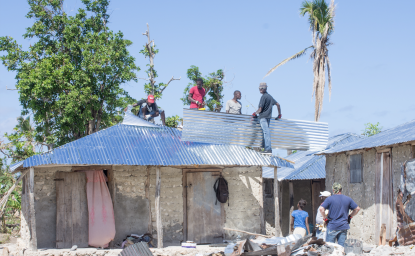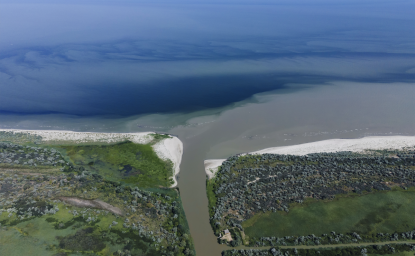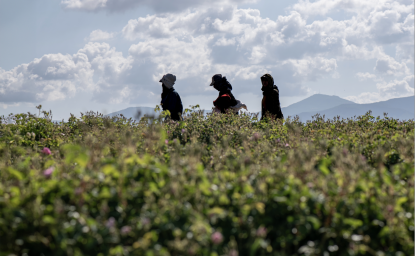Edited remarks at UN General Assembly Second Committee panel discussion on "Climate change: Impacts and threats"
Mr. Chairperson, Excellencies, Ladies, and Gentlemen:
My point of departure for these remarks is the excellent foundation provided by the Secretary-General's draft report on climate change and security responding to the General Assembly's resolution from earlier this summer.
The Secretary-General identified five channels through which climate change can have security implications:
1. Vulnerability: impacts on human well-being of vulnerable individuals and communities;
2. Development: retardation of economic development;
3. Coping and Security: uncoordinated coping through population migration and/or conflict over scarce water, land, or other resources;
4. Statelessness: displacement of whole populations through sea-level rise and consequent statelessness;
5. International Conflict: changes in availability of, or access to, internationally shared resources (e.g., transboundary waters).
The Secretary-General's draft report calls for "threat minimizers," prioritizing win-win solutions and ones that address problems where there is greatest need.
In addition to this firm foundation, I am joined by a very distinguished set of panelists who are leading authorities on climate change's impact on migration and on small-island states, for example, so I have focused my comments on other topics.
I'd like to make five points on climate/security links, amplifying some dimensions of the research and policy debates, and raising a few topics that are not commonly discussed.
1. Bring climate change down to the ground level to link it with longstanding underlying threats to security
While we commonly focus on the global level for efforts to address climate change, it plays out at the ground level in very distinct, place-specific ways.
In this context of bringing climate change down to the ground level, the notion of the "threat multiplier" is very useful. Climate change may contribute to conflict and instability by worsening the conditions in some familiar sectors:
• Environmental issues, including water, desertification, drought, deforestation
• Food and agriculture
• Poverty and stunted economic growth
• Health
• Population growth in both humans and livestock
Climate change is expected to exacerbate these conditions, which can be underlying contributors to instability.
Therefore in many parts of the world, climate change will not be generating a new kind of conflict. Instead it will be an accelerant or multiplier that makes it more difficult to address conflict or instability caused along familiar lines of tension.
We must build resilience and adaptive capacities; the capacities that make countries and communities less vulnerable to climate change are also ones that will make them less vulnerable to instability, fragility, conflict, and a range of negative security outcomes. These are the "win-wins" highlighted in the Secretary-General's report
These climate-security links provide an additional rationale for investing in governance and institutional resilience that would address both climate and security vulnerabilities.
By bringing climate change impacts down to the ground level in this way, we will also be able to keep a strong focus on the underlying causes of insecurity, which are present whether climate change is in play or not.
2. Focus on rates of change, as well as absolute and relative scarcities
Climate change will mean some scarce resources get more scarce or in some places, there will be too much of that resource in too short a time (think of flooding or sea-level rise). These statistics and predictions are very worrisome, but I would urge the Member states to pay particular attention to rates of change in those resource availabilities as well.
It may often be a greater security concern when change in access to resources happens suddenly, when political institutions do not have time to adjust to those new realities.
Glacial melt-fed rivers are a prime example. With the rapid melting of glaciers due to warmer temperatures, there will be greater flows in the short term, and then precipitous declines, at times in areas where there isn't a history of having to adapt to scarcity. These sudden changes in water availability are of grave concern.
These sudden changes, often affecting transboundary resources, are ones Member states and this body should be doubly concerned about. It suggests prioritizing developing robust and flexible international institutions to be able to channel those stresses in positive and non-conflictual directions.
The Secretary General's report is quite right to emphasize transboundary water-sharing institutions in this regard. We do not have a global regime for water, nor should we, probably. But we must have a global emphasis on developing these institutions in a proactive, preventative way.
3. Maximize cooperation and minimize conflict in the ways we address climate change
As the world gets serious about mitigation in the Copenhagen process and begins to take dramatic new steps, it is important to ask:
• How can mitigating climate change contribute to conflict?, and
• How can mitigating climate change contribute to peace?
This is a story that is just starting to evolve, but one we must anticipate and ask these questions.
What are examples where conflict potential must be minimized around mitigation?:
• Biofuels--growing our energy--has been associated with perceived food shortages and food riots. A complex mix of factors cause food riots and I am not suggesting a straight-line, causal argument. But it raises these questions for further study. We have seen that accelerated deforestation and land conversion to produce biofuels can be part of producing social conflict.
• There may be new competition and potentially conflict around critical new inputs to the green economy such as lithium for batteries.
• Adding more nuclear power will produce more waste and disposal challenges that we have seen can intersect with security concerns.
• The principle of payment for ecosystem services is reflected in REDD, Reduced Emissions from Deforestation and Forest Degradation. This approach is very promising to provide resources needed to get to a global deal on climate change. REDD promises to inject significant resources in exchange for big changes in land use practices. How the money is disbursed and how the changes in access and use of forests occur will really matter in the context of climate and security. The resources and land use changes could be a great force for conflict or could be a force for peace and development.
What are examples where cooperation, confidence-building, and peace must be maximized around mitigation?:
• Addressing climate change cooperatively can build patterns of cooperation among states and among peoples.
• Reducing dependence on fossil fuels could dampen competition for this resource and reduce conflicts.
• By bringing climate change down to ground level, it is possible to utilize natural resource peacebuilding tools in specific resource areas, including water (internal and international) and transboundary conservation or so-called "peace parks."
I highly recommend the 2009 UNEP report From Conflict to Peacebuilding: The Role of Natural Resources and Environment, prepared as technical support to the Peacebuilding Commission, DPKO, UNDP, and other parts of the UN.
4. Consider climate change implications for traditional security institutions (national and multinational)
• Traditional security institutions will face additional challenges, particularly regarding transport and rescue platforms, while at the same time facing pressure to decrease expenditures in this sector. There will be a greater number and scale of humanitarian missions in a warmer world.
• They will be concerned with the threat-multiplier contributions to conflict and instability (familiar and new).
• The threat-multiplier effect is going to make existing stability operations more difficult, such as the blue helmet deployments in Haiti.
• They are concerned about roles in new high-priority geographic areas, such as the Arctic.
• There is a need to lower the military's bootprint, its contributions to climate change, to reduce its own vulnerability and to do its share to meet the global emissions challenge.
• There are potential roles for militaries and peacekeeping forces in helping build adaptation capacity, such as by utilizing its engineering capacities.
• Traditional security institutions may again use environmental dialogue to build trust among countries. Joint natural-disaster training and response is an avenue for militaries to interact in ways that can build confidence.
• Increasingly, retired military officers are working as advocates for tougher mitigation steps in the negotiations, so that the threat-multiplier challenges do not end up as severe, and create problems that fall in the traditional security realm.
5. Recognize the different dimensions of vulnerability
The heavy threat-multiplier focus of climate change security links encourages us to rightly focus on developing countries. The threats of sea-level rise and increased frequency and intensity of storms have us focus on small-island states and low-lying states like Bangladesh. These are proper priorities for our attention, due to the great vulnerability among those parties least responsible for creating the climate-change problem.
It is an unspoken assumption that if poor states are the most vulnerable, then wealthy countries are the least vulnerable.
I would challenge that assumption. All countries are vulnerable in their own way.
Instead of a linear line correlating wealth and vulnerability, I would suggest we consider an inverted U-shaped curve, with high vulnerability for developed countries due to:
• Coastal urban centers with costly infrastructure to protect, insure, and rebuild
• Drought susceptibility
• Infrastructure, often connected to energy, concentrated in suddenly unstable areas, such as upon melting permafrost, causing foundations to crack.
• Low levels of flexibility in the face of crises: Most people in developed countries have come to expect unlimited clean water to flow from the kitchen tap, and are not well prepared to adapt when it does not.
I emphasize these vulnerabilities in developed countries to highlight climate and security links are ones that will affect countries differently, but will affect all countries. Recognizing that countries have different capacities for addressing these vulnerabilities, all countries must address climate change rigorously through strong mitigation and adaptation measures.
In conclusion, there has been considerable debate over where to place this climate security topic within the United Nations system. Which bodies should be responsible for it?
I hope my presentation shows climate and security links are critical for all parts of the UN to work on, for all Member states to work on, for all ministries in all Member states to work on, and for all peoples to work on.
We will miss threats and opportunities if we do not adopt such a comprehensive institutional approach, for climate change poses threats and opportunities across topics, across authorities, and across toolboxes.
Related Links




